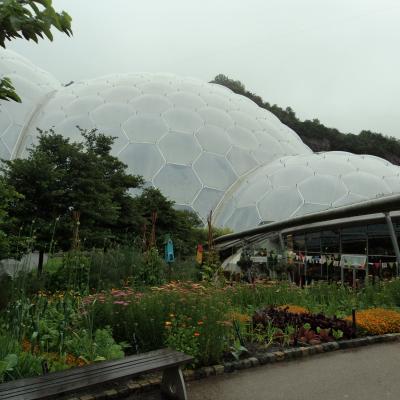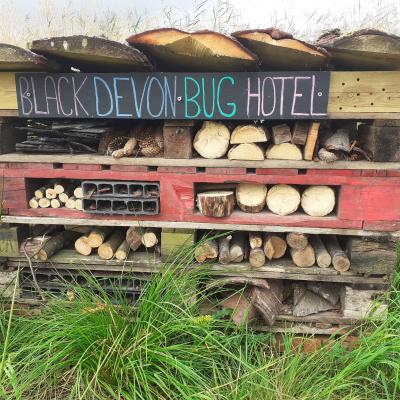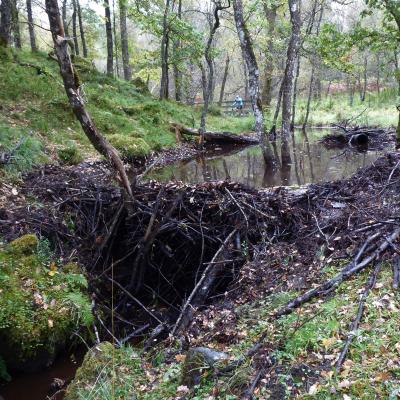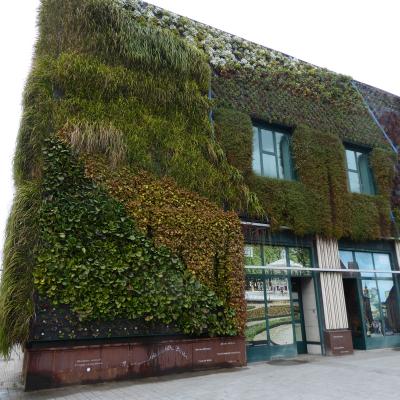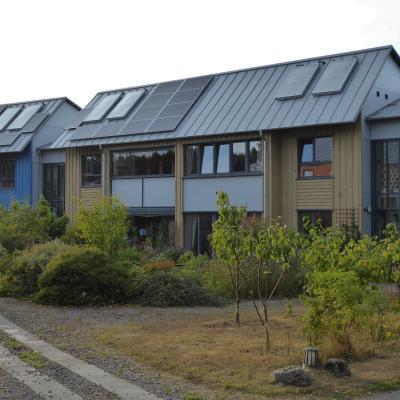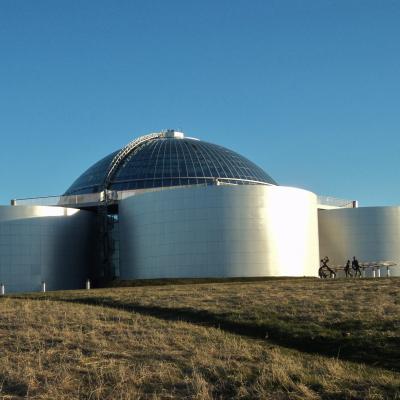Foreword
I was fortunate to be brought up in a family that enjoyed visiting the countryside and observing nature. My parents gave me the freedom to explore mountains, woodlands, rivers and to cycle on roads from a young age. This led to my interest in geography. However, in my lifetime the climate has noticeably changed. Winters are warmer with less snow and increased heavy rainfall causes floods and landslips in places where they did not occur before. In my childhood there were more flying insects; car windscreens were regularly splattered with dead insects and you could not leave a window open in the evening as insects would be attracted to the light. Unfortunately, whilst many insects have declined, milder winters have helped to increase others such as blood sucking ticks and the diseases that they carry.
Our society has also changed. Road traffic has increased dramatically, towns and cities have grown, green spaces have shrunk. I was raised in a house on the edge of Perth, a large town between the Lowlands and the Highlands in Scotland, now surrounded by sprawling housing estates. Eating out has become a normal activity, rather than an occasional treat. And, at primary school I remember one classmate who flew to Tenerife each year for a family holiday - now foreign travel is routine for many and an expectation for some.
I have witnessed the explosive growth in urban population. As a student I visited New Delhi in 1984, population seven million; and returned on a work trip in 2018, population nearly 30 million. In 1984, a crazy mix of lorries, ponies and oxen dragging over-loaded carts, bicycle rickshaws, cows and people carrying goods crammed the streets. This time the streets were equally busy but full of polluting lorries, private cars and dirty diesel rickshaws; with cows and pedestrians adding to the mix. A blanket of air pollution hung over the city. Meanwhile, the total human population has grown in my lifetime from 3.4 to 7.7 billion.
Humans have caused many adverse environmental impacts; many have worsened in my lifetime. Agriculture is overexploiting the thin layer of fertile soil that we all depend upon, depleted of nutrients and blown or washed away. Downstream, estuaries fill with nutrients from sewage and the run-off from agriculture. These nutrients enable algae to multiply rapidly which depletes the supply of oxygen in the water and fish can suffocate. Our rivers and oceans are full of plastic, and litter is a problem on land especially in low income countries that cannot afford the infrastructure to collect or recycle the waste. Species rich tropical forests are still being cut down leading to a loss of wildlife. Acid rain forms downwind from coal power stations, whilst air pollution cuts the life expectancy of millions of people across the world.
It is not all doom and gloom. There have been many environmental improvements. The insecticide DDT was a new wonder chemical that killed mosquitoes, reducing the incidence of malaria. Unfortunately, DDT became concentrated further up the food chain and affected predators like birds of prey. It caused their egg shells to thin and prone to break, and led to several bird species becoming near extinct. One of the early environmental campaigners, the American Rachel Carson, made this connection, and led a successful campaign to ban DDT in most places. Within Scotland, there have been many environmental improvements such as removing lead from petrol and from our water supplies, salmon have returned to the formerly heavily polluted River Clyde, new cycle paths are being built, and more native deciduous trees planted. Increased efficiency has led to a steady fall in the total energy consumed in the UK since 2005. Recently, after decades of indifference, and following a campaign by Sir David Attenborough, the public has finally taken notice of the impact of plastic on our environment. Things change, just not quickly enough.
****
For the last ten years I have worked on climate policy and company innovation in Scotland. Scotland is a small, but rich, country of five million people, one of four countries that make up the United Kingdom (UK). The industrial revolution began in the UK in 1776 when a Scotsman, James Watt, developed an efficient steam engine that produced more power and burnt less coal. It was used to pump water out of coal mines but it resulted in more coal being burnt as it reduced the cost of extracting coal and the number of steam engines grew quickly and spread across the world. Global emissions of carbon dioxide increased slowly at first then accelerated from the 1770's onward.
Moving forward to November 2021, Glasgow, the largest city in Scotland, hosts the United Nations climate change conference (COP26) – a conference crucial to our future. The Covid-19 outbreak delayed this conference from November 2020. This pandemic has shaken global society and economy, resulting in changes which previously would have been politically unacceptable. I have assumed that many of these enforced changes will be temporary, on the assumption that country-wide lockdowns may have passed by the time you read this. A chapter at the end focuses on the lessons learnt from the pandemic. Hopefully, the climate change conference will build on and strengthen the existing climate treaty, the Paris Agreement, which does not contain strong enough commitments from every country to prevent dangerous climate change with catastrophic impact on humans and wildlife.
Scotland is an excellent place to host this conference. It has a devolved parliament with responsibility for many areas of climate policy. The Scottish Government has strongly pushed action on climate change since 2006. In 2009, two headline targets were set for 2020: to produce more renewable electricity than total electricity demand and to reduce all climate warming emissions by 42%. A new Climate Change Act incorporated this latter target, along with a long-term commitment to reduce carbon emissions by 80% by 2050. At the time these seemed like bold and ambitious targets. A well-known professional engineering institute argued that the 100% renewable target was set by politicians, not engineers, and that it could not be sensibly achieved. In fact, Scotland is likely to achieve its 2020 renewable electricity target and total emissions have already fallen by over 50%.
In 2019 the Scottish Government announced a climate ‘emergency’ and set tougher targets. They tightened the existing carbon reduction target to a 100% ‘net zero’ target by 2045. This includes Scotland’s share of emissions from international shipping and aviation. The ambition is for widespread charging infrastructure to be in place for electric cars by 2032, new buildings are to be heated by renewable or other zero carbon sources from 2024, all trains are to be emission free by 2035, and flights within the Highlands are to be low carbon by 2040. In addition, Scottish Water, the state-owned water utility, has set itself an ambitious target to be net zero by 2040. Ambitious, because this target covers emissions from its own operations; and all emissions from its significant capital construction programme – suppliers who extract raw materials, produce concrete and steel, transport materials and construct infrastructure.
Scotland is a small country, trying to set a good example for other countries to follow. But this book is not just about Scotland. There are international examples of good and bad practice throughout.
****
There are many books on climate change. Some focus on the science; others tell us the steps that individuals can take to take to reduce their impact. This book will not repeat everything that there is to know about climate change. Instead it will provide enough information to help you to understand the science of climate change, and to be better informed to make reasoned choices about your impact on the environment. I call these "carbon choices". This book takes a holistic view covering an eclectic mix of science, ecology, engineering, psychology, economics, politics and geography. It considers the twin environmental crises rooted in unsustainable development that humans face; that of climate change and loss of wildlife. The two are intertwined. Healthy forests, grasslands, savannas, wetlands, peatlands, soils, mangroves, sea grasses and coral reefs all absorb and store carbon dioxide. Conversely, human impacts and destruction of these ecosystems can often release this stored carbon leading to more emissions of greenhouse gases.
The title, “Carbon Choices” was chosen because this book will provide the information that you need to make better choices to reduce your carbon emissions and to think about your impact on wildlife. The sub-title “common-sense solutions” highlights that many of the solutions to climate change and destruction of wildlife are based on common sense - but only to those trained in the issues and who can put aside preconceived ideas and vested interests. Most of us are not trained or equipped to think this way.
Section 1 introduces carbon dioxide, climate change and the destruction of wildlife in a comprehensive but non-scientific way, summarises the impacts of climate change and how we have descended into this environmental mess. Section 2 introduces ten building blocks that will lay the foundations to make better choices for the planet. Section 3 introduces five principles that will guide individual consumers, businesses and governments to make better carbon and environmental choices. I apply these principles to aspects of our day to day lives to illustrate what we can do if we choose to do so. The conclusion includes a checklist of actions for governments, businesses and individuals.
Throughout the book I use as few technical terms as possible, but some are unavoidable. ‘Carbon’ is used as shorthand for carbon dioxide and other greenhouse gases that contribute to a warmer atmosphere – often called global warming or global heating, but perhaps more accurately described as climate change as not all areas will necessarily warm. A ‘carbon footprint’ is the amount of carbon emitted from the production and use of goods or services. A ‘low carbon economy’ is a society and economy that does not emit much carbon. ‘Net zero’ is an economy where any remaining emissions of carbon are offset by permanent carbon removal. ‘Wildlife’ is used to describe all living species, including plants, animals, birds, and fungus; ‘nature’ has a wider definition that includes wildlife but also landscapes and soils.
****
Given our intelligence, education and science, you might think that protecting our planet for humans and wildlife should not be that difficult. We need a wide-ranging mix of actions; a recipe to make a better future. The ingredients are:
- planning for the long-term
- directed taxes and subsidies
- sensible regulations
- good design
- targeted innovation and investment
- education and training
- behavioural change and peer pressure, and
- a commitment by all to work together for a better future. In short, we need an approach based on common-sense.
|
Think long-term, get the price right, incentivise good behaviour. Ban the bad. |
Currently the world has a mix of contradictory policies and actions. Climate change deniers have fought hard to block or delay progress to cut carbon emissions. Human society is not taking climate change or the loss of wildlife seriously. But we can if we want to. It is not about hope or capability. It is whether we as humans choose to work together for a better future. Every time we have the opportunity, we need to make the right choice, and use these choices to influence each other, businesses and our politicians. Like the butterfly effect, one change can be a catalyst for so much more.
|
|
